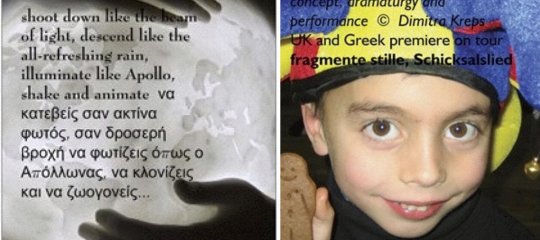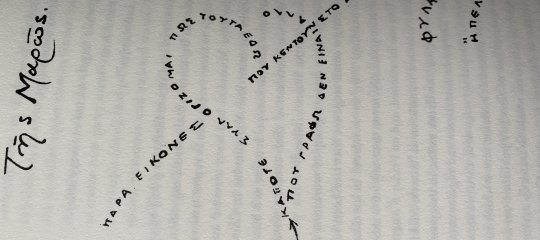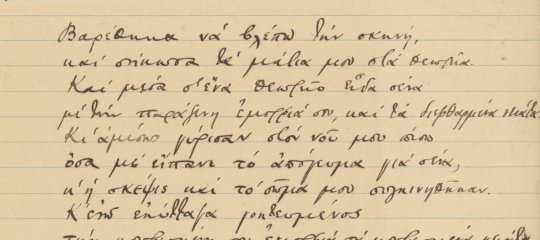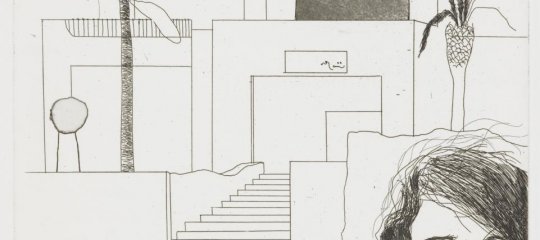Πληροφορίες για το Πανεπιστήμιο της Grenoble
mariazoum writes, "ΠΛΗΡΟΦΟΡΙΕΣ ΓΙΑ ΤΑ ΜΑΘΗΜΑΤΑ ΕΛΛΗΝΙΚΗΣ ΓΛΩΣΣΑΣ ΣΤΟ ΠΑΝΕΠΙΣΤΗΜΙΟ ΤΗΣ GRENOBLE
Αγαπητοί συνάδελφοι και συνεργάτες των Φρυκτωριών, σας στέλνω, με αρκετή ομολογουμένως καθυστέρηση, πληροφορίες από το Πανεπιστήμιο Stendhal Grenoble 3 της Γαλλίας.
"
Θεσσαλονίκη, 15 Μαϊου 2003
Τα ελληνικά εντάχθηκαν για πρώτη φορά στη διδασκαλία των ξένων γλωσσών του Πανεπιστημίου το 1975 και λειτούργησαν με αναπληρωτή που αμειβόταν από το Γαλλικό Πανεπιστήμιο (vacataire) για τα χρονικά διαστήματα 1975-1985 και 1995-2001.Από το 2001 η θέση καλύπτεται από ένα φιλόλογο αποσπασμένο από το ΥΠΕΠΘ.
Η διδασκαλία της ελληνικής ως ξένης γλώσσας υπάγεται –μαζί με δεκαπέντε ακόμη γλώσσες- στην U.F.R de langues, littératures et civilisations étrangères (Μονάδα Εκπαίδευσης και Έρευνας Γλώσσας, Λογοτεχνίας και Ξένων Πολιτισμών )του Πανεπιστημίου.
Οργανώνεται από την P.O.L (Politique Ouverte de Langues) με ικανοποιητική υλικοτεχνική υποδομή και απευθύνεται σε φοιτητές πολλών επιστημονικών κλάδων του Πανεπιστημίου της Grenoble καθώς και σε μη- φοιτητές στα πλαίσια της Συνεχούς Επιμόρφωσης.
Όταν το μάθημα της ξένης γλώσσας συμπεριλαμβάνεται στις δυνατές επιλογές του προγράμματος σπουδών τους, οι φοιτητές δεν πληρώνουν δίδακτρα για το πρώτο ή και για τα δύο εξάμηνα. Οι μη- φοιτητές πληρώνουν υποχρεωτικά. Τα δίδακτρα κυμαίνονται μεταξύ 96 και 275 ευρώ για κάθε εξάμηνο.
Η διδασκαλία των γλωσσών διαρθρώνεται ως εξής :
Initiation, δηλαδή, βασική εκμάθηση της γλώσσας που περιλαμβάνει τρία επίπεδα
Perfectionnement , που περιλαμβάνει το τέταρτο και πέμπτο επίπεδο.
Niveau confirmé
Civilisation (μαθήματα πολιτισμού στα γαλλικά) και
Langue de specialité (γλώσσα ειδικότητας)
Η διδασκαλία των ελληνικών γίνεται προς το παρόν μόνο στο πλαίσιο της Initiation, δηλαδή σε τρία επίπεδα και αριθμεί περίπου τριάντα φοιτητές. Πιστεύω ότι, αν τα νέα ελληνικά προτείνονταν στις επιλογές των φοιτητών των κλασικών σπουδών , τα ολιγάριθμα τμήματα θα ενισχύονταν σημαντικά. Είναι κάτι που δεν γίνεται προς το παρόν γιατί - όπως μου είπε ο υπεύθυνος σπουδών του κλασικού τμήματος - το πρόγραμμα των φοιτητών είναι ιδιαίτερα φορτωμένο. Ίσως όμως το μελετήσουν μελλοντικά.
Η ελληνική γλώσσα προτείνεται και ως γλώσσα επιλογής στο τμήμα του F.L.E ( Français langue étrangère), του οποίου οι φοιτητές ειδικεύονται στη διδασκαλία της γαλλικής ως ξένης γλώσσας (κυρίως στο εξωτερικό). Κάποιοι από αυτούς διδάσκουν ήδη στο γαλλικό εκπαιδευτικό σύστημα και είναι κάθε εθνικότητας.
Κατά τη διάρκεια των μαθημάτων τοποθετούνται στη θέση του διδάσκοντος και του διδασκομένου ταυτόχρονα , παρατηρούν και στο τέλος συντάσσουν μια εργασία δεκαπέντε σελίδων στην οποία αναλύουν τη διδακτική διαδικασία ,ασκούν κριτική ή κάνουν προτάσεις στον διδάσκοντα, και αποτιμούν την όλη εμπειρία της εκμάθησης μιας καινούριας γι’ αυτούς γλώσσας. Το τμήμα αυτό αριθμεί είκοσι φοιτητές.
Πιστέψτε με ,η εμπειρία αυτή ήταν ιδιαίτερα πολύτιμη και εποικοδομητική
Τέλος, υπάρχει η δυνατότητα εκμάθησης της ελληνικής γλώσσας και στο Κέντρο Αυτό-εκμάθησης στο οποίο απασχολούμαι δύο ώρες την εβδομάδα .Εδώ ο κάθε ενδιαφερόμενος μπορεί να μελετήσει τη γλώσσα μόνος του ή ακολουθώντας το πρόγραμμα μαθημάτων που του υποδεικνύει ο καθηγητής και που είναι προσαρμοσμένο στις προσωπικές του ανάγκες .
Στα καθήκοντά μου εμπίπτουν επίσης :
η διεξαγωγή των εξετάσεων για το Πιστοποιητικό της Ελληνομάθειας που οργανώνεται από το Πανεπιστήμιο της Θεσσαλονίκης
καθώς και η προφορική εξέταση των τελειοφοίτων του γαλλικού Λυκείου (baccalauréat) που έχουν επιλέξει τα ελληνικά ως ξένη γλώσσα.
Για οποιαδήποτε επιπλέον πληροφορία είμαι στη διάθεσή σας.
Με ιδιαίτερη εκτίμηση για όλους
Μαρία Ζουμπουλίδου
- Εισέλθετε στο σύστημα για να υποβάλετε σχόλια











